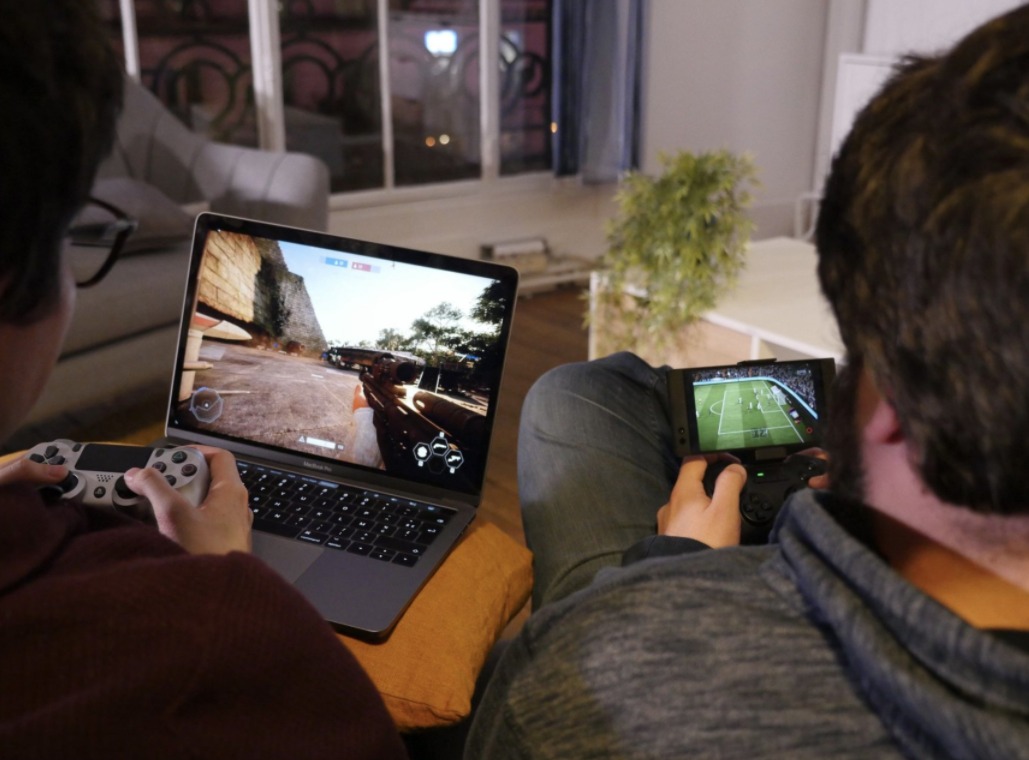
Anyone who has built, or has considered building, their own desktop PC knows it can get very expensive and time consuming, especially if you’re hoping to outfit it with the latest and greatest hardware. But according to French startup Blade, using a powerful gaming PC shouldn’t be much different than subscribing to Netflix.
That’s the crux of Blade’s monthly subscription service, Shadow, which will soon be launching for a small number of users in the U.S. after first arriving in France. The service will be available in California starting Feb. 15, with a limited batch of preorders on offer on Jan. 4. It will expand to the rest of the continental U.S. this summer, according to the company.
The idea is certainly enticing: the Shadow app allows essentially any mobile device or computer to run full PC games, whether it be on a Samsung Galaxy phone or a five-year-old MacBook Air. The company is pitching it as a way to turn any gadget with a screen and an Internet connection into a speedy gaming rig that can run demanding PC games and fit in your pocket.
The Shadow app works by outsourcing all the heavy lifting to Blade’s hardware in its data centers, which offers users the experience of gaming on a Windows 10 PC featuring Nvidia graphics and an Intel Core i7 processor with 12GB of RAM and 256GB of storage. Using Nvidia’s tech, Shadow can run graphics in 1080p at 144Hz or 4K resolution at 60Hz. The service is available for Windows, Mac OS, Android, Android TV-powered smart TVs, and will be coming soon to iOS. The company will also sell a hub with ports and a microprocessor later this year for users who want to game with accessories like a monitor and keyboard when accessing the service. In terms of data usage and battery life, Blade says running games through Shadow is just about as taxing on your mobile device as streaming an HD movie.
“One thing that’s important to us is not [having] to teach the player a new way to use the device, or a new way to play,” says Asher Kagan, Blade’s president. “It’s the same experience that they’ve had so far.” Another part of Blade’s sell is that gamers won’t have to worry about upgrading their computer, since the company plans to update its own gear as new tech becomes available.
Blade’s Shadow is far from the first attempt at building a streaming gaming service — services like Parsec and LiquidSky have similar ambitions. But latency has been a key obstacle for cloud gaming services in the past. Perhaps the most memorable example of this was an early service that debuted in 2010 called OnLive. Although there was plenty of excitement behind the idea, business troubles and concerns over laggy performance eventually contributed to the service’s downfall, with Sony buying the company’s assets in 2015. But companies like Shadow could have a better chance at succeeding today thanks to faster Internet connections and advanced cloud computing services like those operated by Amazon and Microsoft. “We didn’t really have this notion of cloud or mobile computing that we have today,” says Brian Blau, a research vice president at Gartner. “It’s really a different landscape.”
Blade maintains that latency won’t be an issue with its service. The company claims that it’s conducted blind tests in which professional competitive gamers couldn’t tell the difference between Shadow and a physical PC when playing Overwatch and Counter-Strike, two fast-paced shooters that demand zero latency for maximum enjoyment. In a live demo of the technology, I witnessed Tomb Raider running on a Samsung Galaxy phone, Samsung Galaxy tablet, and a smart TV with no visible lag.
But there are other potential hangups to consider. Getting the best performance out of Blade’s service will depend on the strength of your Internet connection — Shadow requires at least 15 Mbps. That’s important to consider if you’re primarily interested in using Shadow for the degree of portability it provides, since you may not always have a strong enough Wi-Fi connection if you’re planning to stream games on the go.
The pricing may also be tough for some users to justify. At $34.95 per month for a one-year commitment, $39.95 per month for a three-month commitment, or $49.95 per month for no commitment, you would be spending a minimum of about $420 per year for your high-end gaming PC. That’s expensive for gamers that may be used to spending roughly $500 or $600 to upgrade the graphics card and processor in their PC every three or four years. Plus, gaming giants like Nvidia and Sony already operate their own cloud gaming services, which could make it difficult for startups like Blade to compete for gamers’ attention and money. Still, Blade’s Kagan is optimistic his company can make a dent despite the competition. And for Blade, winning with gamers could ultimately serve as a stepping stone towards launching more general purpose cloud-based PCs. “Gamers are unforgivable for any latency or quality issue,” he says. “If we can prove that this will work for gamers, it will work for anyone else.”
More Must-Reads from TIME
- Donald Trump Is TIME's 2024 Person of the Year
- Why We Chose Trump as Person of the Year
- Is Intermittent Fasting Good or Bad for You?
- The 100 Must-Read Books of 2024
- The 20 Best Christmas TV Episodes
- Column: If Optimism Feels Ridiculous Now, Try Hope
- The Future of Climate Action Is Trade Policy
- Merle Bombardieri Is Helping People Make the Baby Decision
Contact us at letters@time.com